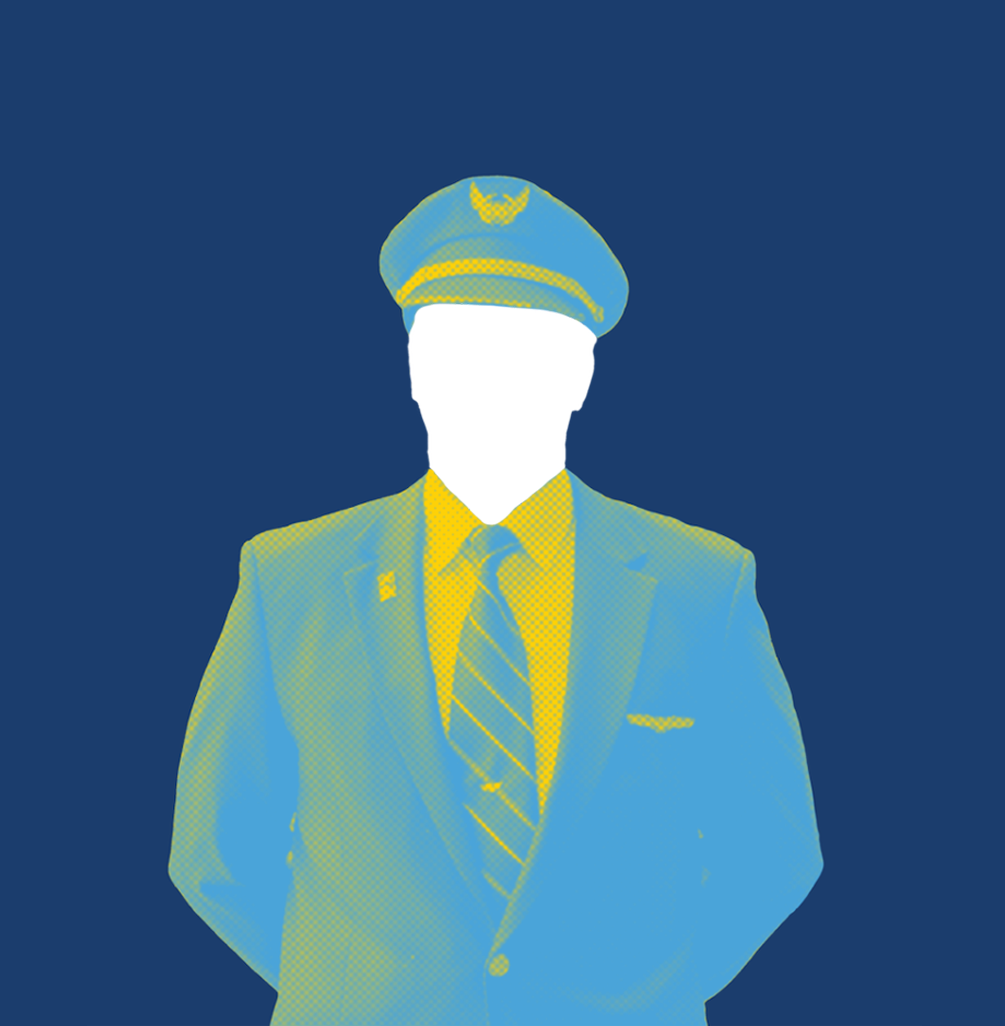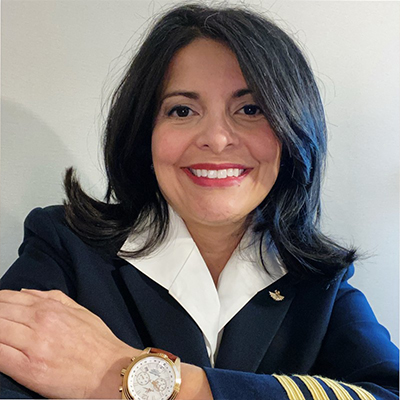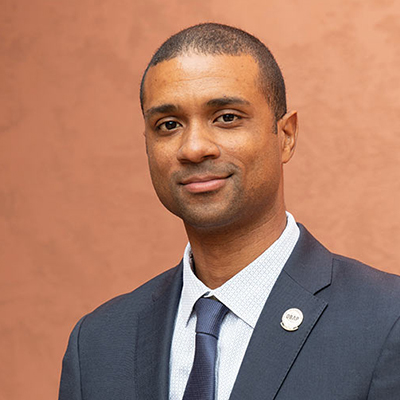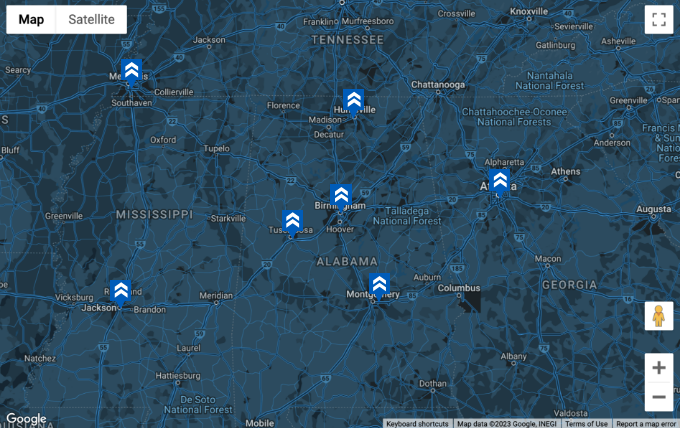AIRLINE PILOT
Fly aircraft around the world.
Explore aviation opportunities
near you with our map tool.


WHY CHOOSE?
TOP 5 REASONS TO BE A COMMERCIAL PILOT
Travel benefits
Explore new cities and use travel perks exclusively for pilots.
Flexible schedule
Not meant for a typical 9-to-5 job? Enjoy a flexible schedule and days off between trips.
Live wherever you want
Take advantage of the unique opportunity to live wherever you want.
In-demand field
Now’s the time to get on board! In the five years prior to the COVID-19 pandemic, U.S. passenger airline job growth beat overall U.S. job growth.
Room to grow
With this career path, the only way to go is up!
CAREER OUTLOOK
An airline pilot career comes with both challenges and rewards. Airline operations run 24/7, and pilots fly fixed-schedule routes both domestically and internationally.
It’s true—anybody with the desire to fly and passion for aviation can become an airline pilot! Pilots around the globe represent the diverse populations they serve, and every person interested in becoming a pilot will be welcomed into our ranks. A good airline pilot has a professional attitude, career-long commitment to training, unwavering focus on flight safety and security, and extensive flying experience that builds confidence and proficiency to handle even the most unexpected developments.
Being an airline pilot is a challenging, rewarding career with great travel benefits. This is not your average 9-to-5 job. Airline operations run 24/7, and pilots fly fixed-schedule routes both domestically and internationally. Pilots flying within the United States typically take off and land at several different airports in a work shift, while long-haul pilots (i.e., those flying transcontinental or oceanic flights between continents) often fly a single long flight. Many pilots have variable schedules and spend a considerable amount of time away from home on overnight layovers.
Pay, benefits, and work rules (e.g., the number of days off work each month) vary depending upon the airline a pilot works for and are determined through negotiated agreements between the airline and the pilots’ union; these contracts must also be in accordance with federal government rules and regulations.
Explore all an airline pilot career path has to offer.
TESTIMONIALS

My parents were a bit skeptical at first since they had seen maybe one female pilot ever and had the misconception that you could only make a career out of it if you were in the military. But they strongly believed in the American dream and had achieved success by not giving up. Once they realized I was serious, they were 100 percent on board.”
– Capt. Claudia Zapata-Cardon

Opportunities have presented themselves because I was always willing to raise my hand. Obviously, I put in the work, but most of my best decisions were the result of mentors guiding me through the different choices I needed to make.”
– Capt. Joel Webley
OVERVIEW
QUALIFICATIONS AND FITNESS REQUIREMENTS
To fly for an airline, you’ll need to get an Airline Transport Pilot (ATP) or Restricted Airline Transport Pilot (R-ATP) certificate from the Federal Aviation Administration (FAA).
Airline pilots must
- Obtain a current first-class medical certificate.
- Successfully complete recurring practical and academic exams.
- Captains must have a full ATP, and first officers (aka copilots) may have an R-ATP.
- Pilots must pass regular physical exams with an aviation medical examiner.
Full ATP certificate applicants must
- Be at least 23 years old.
- Have a minimum of 1,500 hours of flight time.
- Pass written and practical flight exams.
R-ATP certificate applicants must
- Be at least 21 years old.
- Have a minimum of 750 hours logged and documented by a Department of Defense official, 1,000 hours total flight time and a bachelor’s degree from an accredited aviation program, OR 1,250 hours total flight time and an associate’s degree from an accredited aviation program.
- An aircraft-type rating is required for any aircraft flown. Airlines will provide their pilots with the necessary training.
AIRLINE PILOT RESPONSIBILITIES
Commercial pilots fly aircraft for airlines, transporting people and goods safely around the world. They work primarily in the aircraft cockpit. In addition to flying the aircraft, a pilot must spend time carrying out preflight safety checks.
AIRLINE PILOT PAY AND BENEFITS
Pay, benefits, and work rules (e.g., the number of days off work each month) vary depending upon the airline a pilot works for and are determined through negotiated agreements between the airline and the pilots’ union. These contracts must also be in accordance with federal government rules and regulations.
Pilots at most commercial airlines in the United States and Canada are unionized. This means that each pilot group negotiates the pay, work rules, and benefits for its members.
As there is no cookie-cutter approach to collective bargaining, the Air Line Pilots Association (ALPA) is working to strengthen collaboration among ALPA and non-ALPA pilot groups and develop favorable bargaining patterns across pilot group lines. Every pilot group has its own set of contract goals. Prior to bargaining, each pilot group typically conducts a comprehensive analysis of the environment and then establishes the goals, objectives, and initiatives of the collective group.
AIRLINE PILOT POSITIONS
The positions in the airline piloting profession include captain and first officer. Both work as a team to fly a commercial jet. The captain is the pilot-in-command and is ultimately responsible for the aircraft and decisions on the flight deck. The first officer operates as the copilot. Both pilots are fully qualified to fly the aircraft.
At most airlines, a pilot begins as a first officer and moves into the captain’s position — the highest rank of ultimate authority and responsibility—through experience.
You can tell the captain and first officer apart by the stripes on their uniforms. The captain will have four stripes and the first officer will have three.
CAREER PATHS
COMMERCIAL PILOT
Commercial Pilot Certificate
To obtain a commercial certificate in an airplane under Federal Aviation Regulations Part 61 rules a pilot must have the following minimum hours of flight time:
- 250 hours of flight time, 100 hours of which must be in powered aircraft, and 50 must be in airplanes.
- 100 hours of pilot-in-command time, 50 of which must be in airplanes.
- 50 hours of cross-country time, 10 of which must be in an airplane.
- 20 hours of training, including 10 of instrument, 10 of complex or TAA, and a smattering of cross-country and practical test preparation.
- 10 hours of solo training, including a smattering of cross-country and night.
Commercial Pilot Jobs
- Crop duster operation
- Media (such as reporting on traffic)
- Banner towing (like you see at the beach, towing banner ads)
- Tour guide
AIRLINE TRANSPORT PILOT
Airline Transport Pilot Certificate
An Airline Transport Pilot Certificate is required to fly as captain by some air transport operations. (Part 121 – requires a minimum of 1500 hours of flight time, at which 250 of these hours must be logged as a pilot in command of an aircraft)
Airline Transport Pilot Jobs
- Mainline carrier (such as Delta, United, American)
- Low-cost carrier (such as Frontier, Spirit, Allegiant)
- Regional airline (such as Air Wisconsin, CommuteAir, Endeavor, PSA Airlines)
- Cargo carrier (such as FedEx, UPS, Kalitta)
- Military
- Test pilots
GOVERNMENT SERVICES (BORDER CONTROL)
Government Services (Border Control) Jobs
- Government Services
- Fire patrol
- Law enforcement agencies
For a full list of positions, visit USAjobs.gov
GET ON BOARD
AIRLINE PILOT TRAINING PATHS
Below are the three most common paths to becoming a professional airline pilot.
- Aviation university
- Flight training academy
- Military
Aspiring aviators typically get their licenses and ratings in the following order:
- Student Pilot Certificate
- Private Pilot License
- Instrument Rating
- Commercial Pilot License
- Multi-Engine Rating
- Restricted-Airline Transport Pilot Certificate
- Airline Transport Pilot Certificate
Each of the above certificates and ratings requires that you pass a written exam on the ground and a practical flying exam (usually called a “check ride”) in an appropriate aircraft. To qualify for a commercial pilot license, you must be at least 18 years old and meet certain flight-hour requirements. Depending on the training track and flight experience, you could qualify for an R-ATP and begin flying as a commercial pilot in 18 to 36 months.
You may also consider obtaining a Certificated Flight Instructor (CFI) rating after you you’re your commercial pilot license. The CFI rating allows you to teach students how to fly, further refining your knowledge and experience in all aspects of flying. Flight instruction and operations, such as scenic flights, aerial photography, and tow-banner, also help you build flight time and experience more quickly while earning income.
Current licensing regulations can be found in the Federal Aviation Regulations.
Explore aviation opportunities near you with our map tool:

WHO’S HIRING
Ready to get on board? Below is a comprehensive list of U.S. and Canadian airlines that are hiring.
Airline Pilot Hiring Tips
Most airlines look for well-qualified candidates who exceed the above minimums, are passionate about flying, and demonstrate superior leadership and communication skills. Safety is most important. To be competitive, you should keep building flight time and look for opportunities to enhance your skills — both in and outside of the flight deck. Also, remember that your reputation matters. Keep your social media professional.
Like the skills and training needed to become a professional airline pilot, interviewing for those positions is different from your typical job interview. Winging it is not an option.
Airline Pilot Career Path Checklist
- Select an airline
- Gather relevant records and information
- Complete the application
- Prepare for the interview process
- Impress the hiring managers
- Begin your career
Once you’ve selected your airline(s), here are the documents you will need to start the process:
- First-class medical
- Pilot licenses and certificates
- Logbook updated with current flight-time hours
- Birth certificate
- Passport
- Driving record
- College degree and transcripts
You only have one chance to make a great first impression. When you get the call for an interview, here are some airline pilot hiring tips to help you prepare:
Know the Airline: Take a look at the airline’s website to learn about the aircraft it operates, where its pilot bases are located, its partners, and other general information.
Look the Part: Arrive at the interview looking perfectly groomed and professional. Wear a tailored suit in a dark color like black, navy, or gray. Be sure it’s the right size and style that fits your body type. Think conservatively and ask the sales associate for help if you need it. Shoes should be new or freshly polished—no boots. Women should wear closed-toe shoes with a low to moderate heel, especially if there’s a sim portion to the interview.
Bring Your Documentation: Have copies of the documents mentioned above, along with your résumé listing work experience, to bring with you to an interview. This will save time copying the information during the interview.
Get First-Hand Info: The piloting community is relatively small and tight-knit. Talk with your fellow aviators to learn about their experiences interviewing and/or flying at that airline.
Network: Be sure to continue to network throughout your career. This will help you as your career moves forward at your airline and if you decide to move to another airline in the future.
DIVERSITY, EQUITY, BELONGING AND INCLUSION [DEBI]
The aviation industry strives to promote a diverse, inclusive culture where all pilots can be their authentic selves and are motivated to do their best. We are focusing efforts to foster a future generation of airline pilots who better reflect the composition of the communities we serve. The following organizations work daily to inspire the next generation of pilots through outreach efforts to not only those who are already interested in our profession, but also those who have never considered it possible.
WAI – Women in Aviation International
Women in Aviation International is a nonprofit organization dedicated to encouraging and advancing women in all aviation career fields and interests.
PAPA – Professional Asian Pilots Association
Professional Asian Pilots Association was created in April 2017 by a passionate group of airline pilots. What started as a singular group chat between a group of friends gradually evolved into a full-fledged organization, connecting and empowering individuals who share the same vision to overcome Asian underrepresentation in the aviation industry.
LAPA – Latino Pilots Association
The Latino Pilots Association is a nonprofit organization committed in its mission to: INSPIRE, DEVELOP, and SUPPORT the Latin/a/e/o/x Aerospace and Aviation Communities; further eliminating socio-economic barriers through representation, financial support, education and mentorship.
SOS – Sisters of the Skies
Sisters of the Skies, Inc. is a nonprofit aviation organization of professional black female pilots committed to supporting future black aviators through mentorship, professional development, outreach, and scholarship.
© 2023 Air Line Pilots Association, International - All Rights Reserved
Made by Markstein